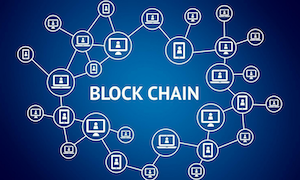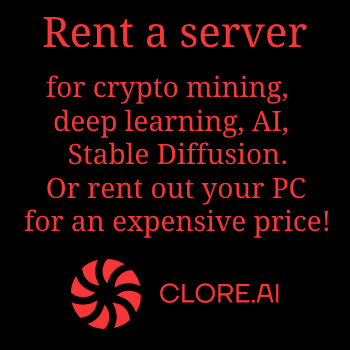 Blockchain is often associated with cryptocurrencies like Bitcoin, but this technology is far broader and more versatile than it might seem at first glance. It has the potential to transform many aspects of our lives—from finance to healthcare. In this article, we’ll break down what blockchain is in simple terms, how it works, what problems it solves, and where it’s being applied. We’ll also look into the future to understand how this technology might shape the world.
Blockchain is often associated with cryptocurrencies like Bitcoin, but this technology is far broader and more versatile than it might seem at first glance. It has the potential to transform many aspects of our lives—from finance to healthcare. In this article, we’ll break down what blockchain is in simple terms, how it works, what problems it solves, and where it’s being applied. We’ll also look into the future to understand how this technology might shape the world.
What Is Blockchain?
Blockchain is a decentralized data storage system that operates as a distributed ledger. In simple terms, it’s like a massive digital ledger where all transactions are recorded, and copies of this ledger are simultaneously stored on thousands of computers worldwide. This setup ensures that data is protected from tampering or loss: if someone tries to alter information in one copy, it will immediately be noticed because the other copies remain unchanged.
The term "blockchain" comes from the English words "block" and "chain." Data in a blockchain is stored in blocks that are linked together in a chain. Each block contains transaction information, a timestamp, and a reference to the previous block, making the system transparent and reliable.
Key Features of Blockchain:
- Decentralization: There’s no single point of control—data is distributed across network participants.
- Transparency: In public blockchains (like Bitcoin’s), all transactions are visible to anyone.
- Security: Changing data requires a special key, and any changes must be approved by the majority of network participants.
How Does Blockchain Work: A Beginner’s Guide
Think of a blockchain as a diary where each page is a block. Each page records data (like transaction details), and once it’s filled, the page is "sealed." A new page (block) is added only after being verified and approved by the network’s participants, known as nodes. Once a block is added, its contents cannot be altered without changing all subsequent blocks, which is practically impossible.
How It Works Step by Step:
- Transaction Creation: A user initiates a transaction (e.g., sending Bitcoins). This transaction is recorded in a new block.
- Node Verification: Network nodes (computers of participants) verify the transaction to ensure it follows the rules—for example, confirming the sender has enough funds.
- Block Addition: Once verified, the block is added to the chain. Each block is linked to the previous one via a unique code (hash), ensuring data integrity.
- Distribution: The new block is copied to all computers in the network, so every participant has the same version of the ledger.
To access or modify data, two keys are used: a public key (visible to everyone) and a private key (known only to the owner). If the keys match, the transaction is confirmed and recorded in the blockchain.
Example:
You send 1 Bitcoin to a friend. This transaction is recorded in a block, verified by the network, added to the chain, and becomes visible to all participants. No one can alter or delete this record without the majority of nodes agreeing.
What Problems Does Blockchain Solve?
Blockchain addresses numerous issues faced by traditional systems.
Here are the main ones:
- Eliminating Middlemen: In traditional systems (e.g., bank transfers), there’s always a third party—like a bank or payment system (PayPal). Blockchain enables direct transactions between participants, reducing costs and speeding up the process.
- Trust: Blockchain builds trust through complex mathematical algorithms. All transactions are verified and confirmed by the network, eliminating fraud. Unlike banks, where you trust a specific entity, here trust is ensured by the technology itself.
- Transparency: In public blockchains (like Bitcoin’s), all transactions are open for viewing. This increases trust and allows tracking of fund movements.
- Security and Control: Decentralization means no single entity can control the blockchain. Changes are only possible with the consensus of most participants, making the system resistant to hacks.
Example:
In a traditional system, when you send money via a bank, you must trust the bank to process the transaction honestly. With blockchain, the transaction is verified automatically, and its result is visible to everyone.
Where Is Blockchain Used?
Blockchain emerged in 2008 when Satoshi Nakamoto (a pseudonym for Bitcoin’s creator) described it as the foundation for the first cryptocurrency. Bitcoin solved the double-spending problem (where the same digital asset could be spent twice) without a central server. Over time, blockchain found applications far beyond cryptocurrencies.
Here are some examples:
- Finance and Smart Contracts: Blockchain enables the creation of smart contracts—programs that execute automatically when conditions are met. For instance, a smart contract can release payment for a product only after delivery is confirmed, eliminating the need for intermediaries like lawyers or banks.
- Supply Chain Management: Blockchain tracks the journey of goods from producer to consumer. For example, Walmart uses blockchain to monitor food supply chains, tracing a product’s origin in 2.2 seconds instead of days. This boosts consumer trust and helps combat counterfeiting.
- Healthcare: Blockchain securely stores medical records. Patients can grant doctors access to their medical history without risking data leaks. For example, Estonia uses blockchain to protect patient data.Internet of Things
- (IoT): Internet-connected devices (smart homes, cars) can interact via blockchain, exchanging data securely without intermediaries. This paves the way for IoT automation and scalability.
- Charity: Blockchain makes donations transparent. Donors can track how their funds are used, addressing distrust in charitable organizations. For instance, the BitGive platform uses blockchain for this purpose.
- Identity Management: Some countries use blockchain for digital identity systems. For example, Finland employs it to identify refugees, while Estonia supports its e-citizenship program with blockchain.
- Gaming and NFTs: Blockchain is widely used in gaming for creating non-fungible tokens (NFTs). Players can own unique digital items (e.g., skins or characters) that can be sold or traded.
Fun Fact:
The size of Bitcoin’s blockchain has been growing steadily. According to Statista, by 2024, it exceeded 500 GB, reflecting the technology’s widespread use.
The Future of Blockchain: What Lies Ahead?
Blockchain continues to evolve, and its potential is becoming increasingly evident. Companies worldwide are adopting the technology to enhance transparency, security, and efficiency. Here are some areas where blockchain could transform the world in the coming years:
- Widespread Business Adoption: By 2030, Gartner analysts predict that 30% of global companies will use blockchain for supply chain management, financial operations, and data protection.
- Central Bank Digital Currencies (CBDCs): Many countries, including China and Sweden, are testing blockchain-based digital currencies. This could reshape the global financial system, making transactions faster and cheaper.
- Intellectual Property Protection: Blockchain allows creators (musicians, artists) to register their works and receive royalties without intermediaries. Platforms like Audius are already using this technology to protect musicians’ rights.
- Environmental Sustainability: Blockchain can help track companies’ carbon footprints and promote greener supply chains. Projects like IBM Food Trust use the technology to monitor product origins.
- Voting and Public Services: Blockchain could make elections transparent and secure against fraud. Countries like Switzerland are already testing blockchain-based e-voting systems.
However, challenges remain. For instance, Bitcoin’s blockchain consumes significant energy due to its Proof-of-Work (PoW) consensus mechanism. In 2024, Bitcoin’s network used more energy than a small country like Argentina. But developers are addressing this: Ethereum’s shift to Proof-of-Stake (PoS) reduced energy consumption by 99%. Scalability is another issue—public blockchains like Bitcoin process only 7 transactions per second, compared to thousands by systems like Visa. Layer 2 solutions, such as Bitcoin’s Lightning Network, are helping to speed up transactions and lower fees.
Implementation complexity is also a hurdle. For many companies, adopting blockchain requires significant infrastructure changes and staff training. Additionally, regulatory uncertainty in some countries poses legal risks for businesses.
Despite these challenges, the future of blockchain looks promising. As awareness grows and technology advances, blockchain will become an integral part of our lives, transforming not only finance but many other industries.
Conclusion
Blockchain is more than just a technology for cryptocurrencies—it’s a powerful tool reshaping the world. It eliminates intermediaries, enhances transparency, ensures security, and opens new opportunities for businesses and society. From finance and healthcare to charity and supply chain management, blockchain has proven its versatility. In the future, its impact will only grow, especially with the rise of digital currencies, smart contracts, and sustainability initiatives.
Want to stay updated on blockchain and crypto trends? Join our Telegram channel! What do you think about the future of blockchain? Share your thoughts in the comments!









